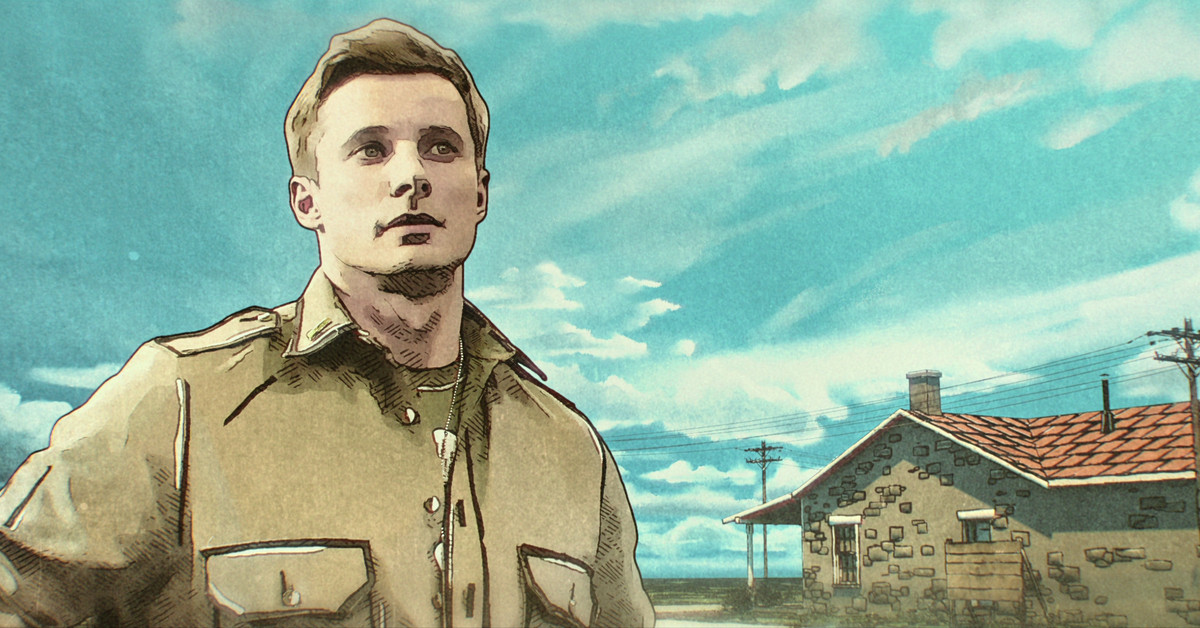The Liberator Evaluation: Netflix’s new sequence is one other battle story too targeted on spectacle
Netflix’s The Liberator virtually didn’t get made. The four-episode miniseries, now streaming, was initially envisioned as an eight-episode drama for the Historical past Channel. The story — each in that model and the one which exists now — was based mostly on the true story of the “Thunderbirds” battalion, a bunch of US forces that spent 500 straight days in fight in 1943. Sadly, the manufacturing prices of staging a grand battle epic proved prohibitive for the Historical past Channel, which led to its eventual rebirth on Netflix as an animated sequence fairly in contrast to something you’ve seen earlier than.
The Liberator is disorienting to observe. Its animation — initially a cost-saving measure, created by the animation home Trioscope — combines live-action performances with laptop animation, and it appears like a Twenty first-century tackle rotoscoping (the place animators illustrate over live-action footage). By this course of, the Thunderbirds’ battle by way of the ultimate years of the battle takes on an uncanny high quality, because the troopers look each extraordinarily actual and intensely animated, like the whole miniseries is shot by way of a really costly Instagram filter. And the animation is sort of good at overcoming The Liberator’s flat and clichéd story. (A gaggle of very totally different younger males discover brotherhood in fight.)
On this regard, The Liberator is in good firm. American leisure about battle — significantly each World Wars — is now usually mentioned by way of scale, scope, and technical mastery, whereas their subject material doesn’t exhibit a lot curiosity in grappling with historical past past very simple narratives about younger valorous males standing nobly towards fascism. It’s a machine in service of constructing a greater battle film by forgetting the explanation we made them within the first place.
Final yr, Sam Mendes’ 1917 received Academy Awards for its cinematography and particular results, as the best way it was filmed — rigorously and thrillingly crafted to look as two steady takes with just one break within the center — turned its calling card. (The story was virtually inappropriate: on this one, a soldier faces unattainable odds to ship a letter.) Christopher Nolan’s Dunkirk chronicles one of the crucial dramatic moments within the European theater of World Conflict II, however additionally it is seemingly extra essential to audiences and critics as a Movie From The Maker Of The Darkish Knight with a clockwork plot and parallel narratives. 2016’s Hacksaw Ridge — which was disgraced director Mel Gibson’s comeback movie — is a heavy-handed work lionizing a conscientious objector’s refusal to arm himself as a Christ-like determine. It’s additionally one of the crucial harrowing depictions of battle in the previous few years, gory and uncompromising in its spectacle. (Gibson, The New York Occasions famous, is a “gourmand” of violence.)
There are a selection of attainable causes for why battle movies are the best way they’re — a thirst for realism in a Hollywood panorama the place the one different sort of big-screen spectacle is CG-heavy superhero franchises, possibly, or maybe due to a latent jingoism in theater audiences. Or it might be even easier: studios need to make movies which can be each commercially and critically profitable, and battle movies are the uncommon style that has a frequent shot on the trinity of blockbuster enchantment, vital acclaim, and awards status.
The Liberator isn’t as gripping or memorable as the opposite works in its class, but it surely’s enjoying with quite a lot of the identical feelings and leaning on its technical improvements to captivate jaded audiences. Whereas its blockbuster contemporaries are higher crafted and fewer shopworn narratively talking, The Liberator appears extra fascinated by recalling its predecessors, like Band of Brothers, than saying something of observe. Like many different reveals and flicks, it desires to stick to a sample set by Saving Personal Ryan: a fictional account so indelible it’s handled as genuine, merely due to the way it seemed. For The Liberator, the outcome feels low cost.
It doesn’t should, although. Probably the most placing battle movies I noticed just lately was They Shall Not Develop Previous, Peter Jackson’s 2018 documentary that painstakingly reworked not often seen archival footage from World Conflict I — hundred-year-old movie in peril of decaying endlessly — with fashionable particular results. Impossibly previous movie is colorized, remastered, retouched, and, in some instances, animated. After which the entire thing is ready to excerpts from hours of interviews with veterans.
The result’s a piece that immerses the viewer within the texture of historical past, transposing it to a contemporary scale. It helps you think about the horrible energy of weapons that would kill en masse wielded for the primary time; as artillery blasts crater the battlefield and males stand atop the entrails of horses. They Shall Not Develop Previous additionally particulars propaganda that satisfied boys to enroll, and the depressing circumstances that awaited them within the theaters of battle. It’s a movie about males’s worst recollections, rendered in excessive definition for the primary time.
“While you see a lifeless physique in full shade, you grieve it all of the extra” wrote columnist Drew Magary in a GQ article in regards to the movie, the military-industrial advanced, and the American cheapening of battle. They Shall Not Develop Previous, Magary argues, is a technical feat that serves as a corrective to different common depictions of battle, that are heavy on “pageantry” and light-weight on the horror. We’ve got such dazzling instruments at our disposal and a concurrent obligation to make use of them responsibly — an obligation to render the why of battle as vividly because the how. To erect monuments and never empty spectacles. To actually ponder what calling one thing The Liberator would possibly imply.
#Liberator #Evaluation #Netflixs #sequence #battle #story #targeted #spectacle











